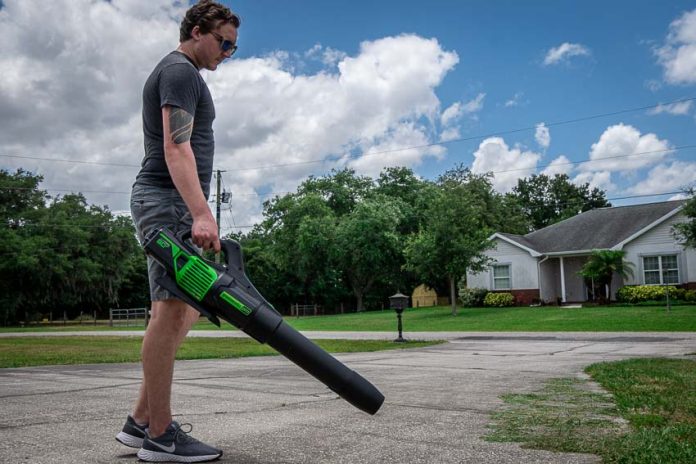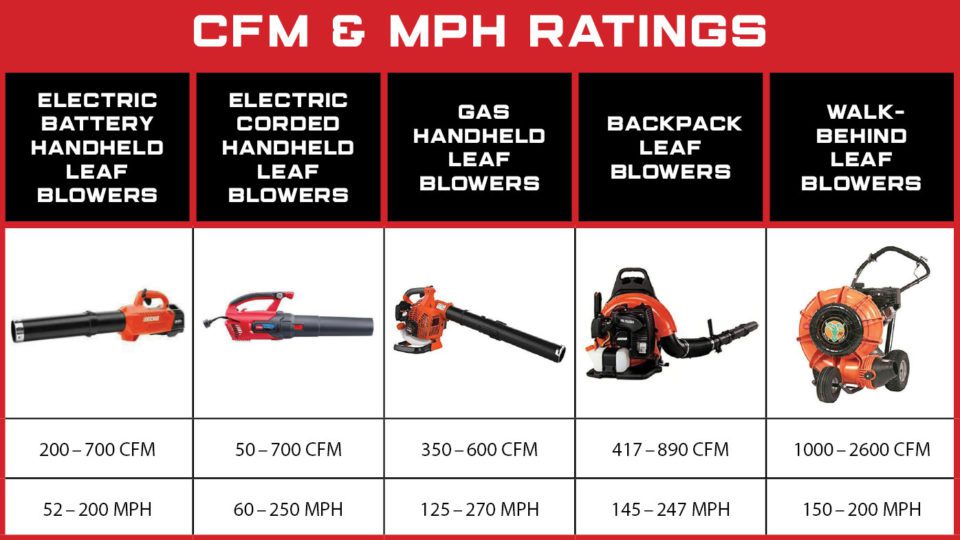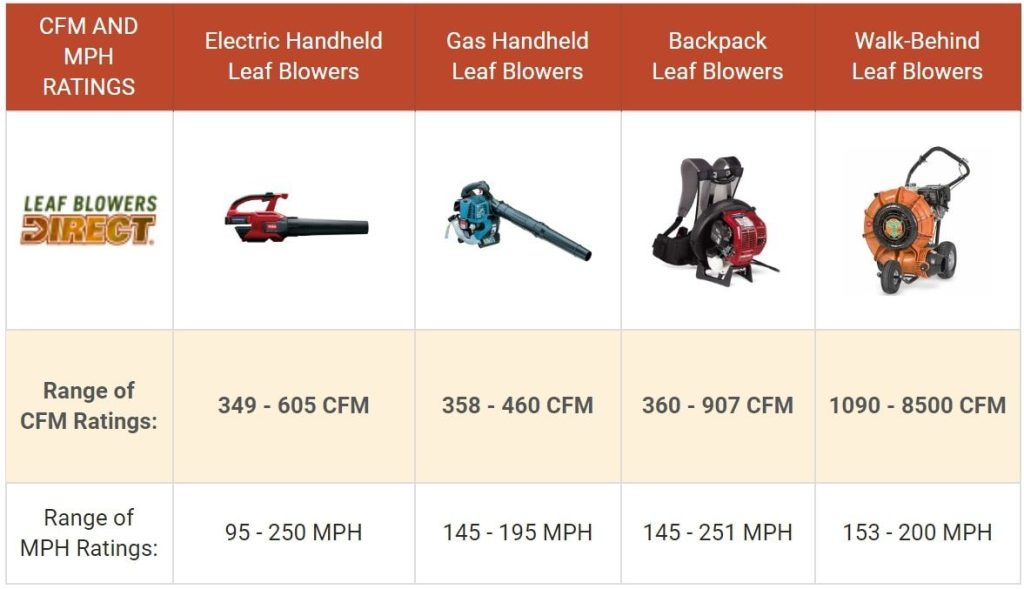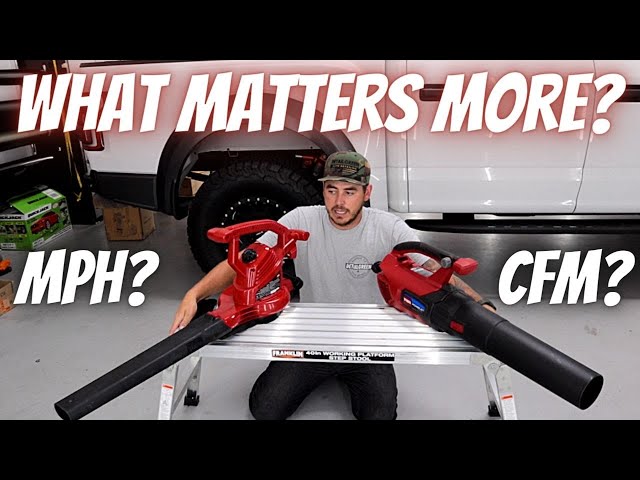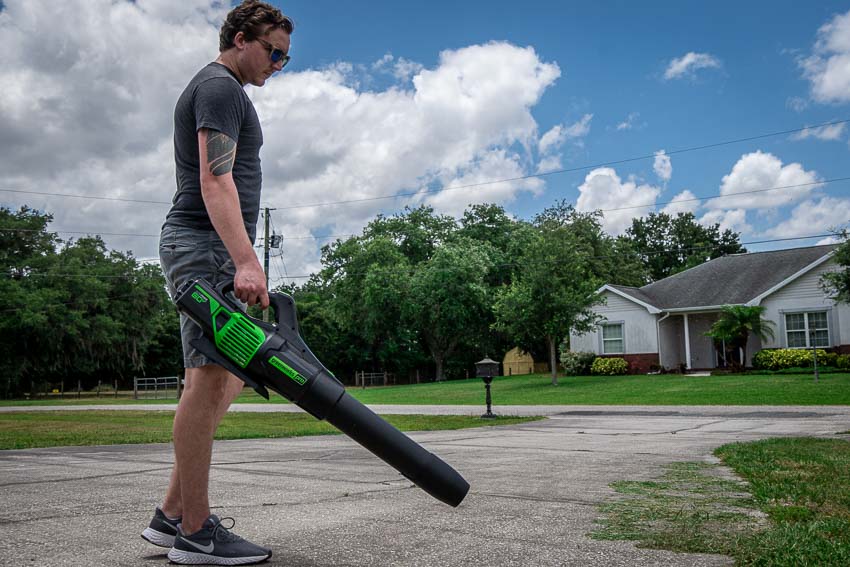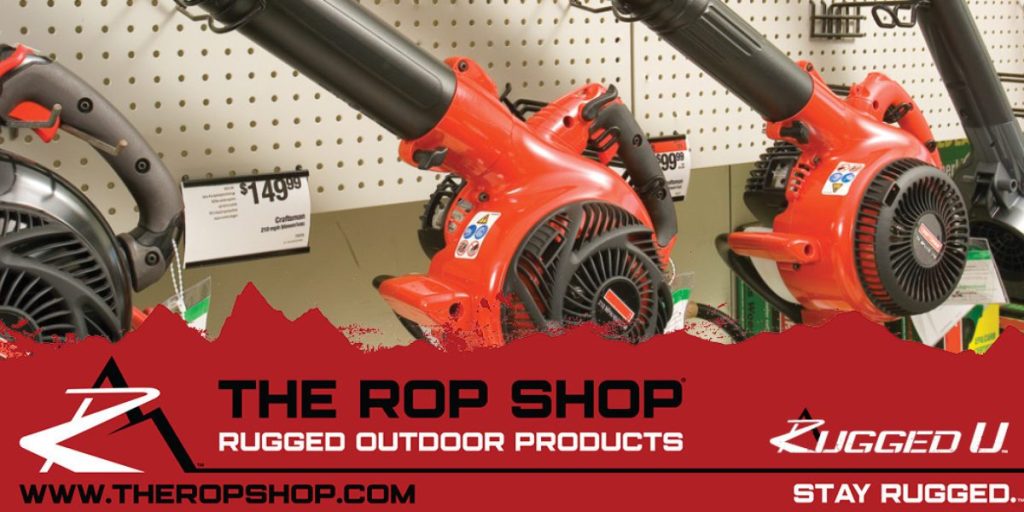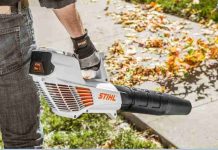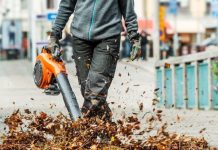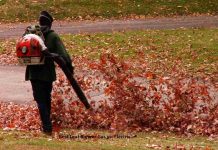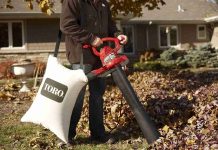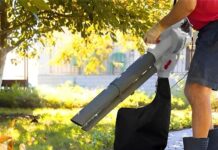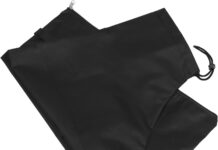When choosing the perfect leaf blower for your yard, the question of what’s better – CFM or MPH – can leave you scratching your head.
In this article, we unravel the mystery and shed light on the importance of CFM (cubic feet per minute) and MPH (miles per hour) in determining the efficiency and effectiveness of leaf blowers.
Whether itching to clear leaves or tackle other debris, join us as we explore the ultimate showdown between CFM and MPH and help you make an informed decision for your autumn arsenal.
CFM (Cubic Feet per Minute)
Definition and Importance
CFM, or Cubic Feet per Minute, measures the volume of air that a leaf blower can move in one minute. It indicates the blower’s ability to generate a powerful airflow, crucial for effectively blowing leaves and debris. The higher the CFM rating, the more air the blower can push, increasing efficiency and faster clean-up.
Factors Affecting CFM
Several factors affect the CFM of a leaf blower, including the power of the engine or motor, the design of the blower’s impeller, and the size and shape of the blower’s nozzle. A more powerful engine or motor can generate a greater air volume, while a well-designed impeller and nozzle can help maximize the airflow without causing excessive turbulence.
Determining the Optimal CFM
The optimal CFM for a leaf blower depends on the specific task. A lower CFM may be sufficient for light-duty tasks like clearing grass clippings or small debris. However, a higher CFM is recommended for heavy-duty tasks like removing wet leaves or clearing large areas to ensure quick and efficient clean-up.
MPH (Miles per Hour)
Definition and Importance
MPH, or Miles per Hour, measures the speed at which the air comes from the blower’s nozzle. It indicates the blower’s ability to create a potent and concentrated stream of air, essential for effectively moving and blowing away leaves and debris. The higher the MPH rating, the faster the air velocity and the stronger the blowing force.
Factors Affecting MPH
The MPH rating of a leaf blower can be influenced by various factors, including the blower’s power, nozzle design, and air intake system. A more powerful blower will generate a higher air velocity, while a well-designed nozzle can help focus and direct the airflow more effectively. An efficient air intake system can also contribute to maintaining a consistent MPH output.
Determining the Optimal MPH
The optimal MPH for a leaf blower is determined by the specific task and the type of debris being cleared. A moderate MPH may be sufficient for light debris such as grass clippings. However, a higher MPH is recommended for heavier debris like wet leaves or stubborn dirt to ensure the forceful blowing power needed for effective removal.
This image is the property of s3.us-east-1.amazonaws.com.
CFM vs. MPH: Which is More Important?
Application and Purpose
When comparing CFM and MPH, it’s essential to consider the application and purpose of the leaf blower. CFM is more crucial for tasks that require moving a large volume of leaves and debris, while MPH is essential for lifting and blowing away heavier or stuck-on debris. Ultimately, the importance of CFM and MPH may vary depending on the specific cleaning needs.
Consideration of Leaf Size and Density
The size and density of the leaves and debris being cleared also play a role in determining the importance of CFM and MPH. In cases where the debris is lightweight and easily movable, a higher CFM may be more important to cover a larger area quickly. However, if the debris is dense and heavy, a higher MPH is crucial for effectively dislodging and blowing away stubborn particles.
Blower Type and Task Efficiency
The type of blower being used also affects the importance of CFM and MPH. A balance between CFM and MPH is necessary for handheld or backpack blowers to ensure the blower is easy to handle and maneuver. A higher CFM may be more critical for more extensive, push-type blowers to cover a wider area efficiently. Understanding the blower type and its capabilities is crucial in determining the importance of CFM and MPH.
Comparing CFM and MPH
Synergistic Relationship
CFM and MPH are not independent of each other; in fact, they work in a synergistic relationship to achieve optimal blowing performance. While CFM provides the volume of air being moved, MPH determines the speed and force of the airflow. Together, a high CFM and MPH rating create a potent and concentrated stream of air, maximizing the effectiveness of the leaf blower.
Understanding Trade-offs
There is often a trade-off between CFM and MPH regarding leaf blowers. Increasing one may mean sacrificing the other. For example, increasing the CFM might result in a broader coverage area but at the expense of reduced MPH and blowing force. Therefore, balancing CFM and MPH based on the specific cleaning needs is essential to ensure optimal performance.
Real-life Examples
Let’s consider real-life examples to understand CFM and MPH’s importance better. Imagine you need to clear a large pile of wet leaves in your backyard. In this case, a leaf blower with a higher CFM rating would be advantageous as it can quickly move the larger volume of leaves. However, if you were clearing loose grass clippings from your driveway, a higher MPH rating would be essential to blow them off effectively.
This image is the property of www.leafblowersdirect.com.
Choosing the Right Leaf Blower
Factors to Consider
When choosing a leaf blower, several factors should be taken into account. These include the size of the area to be cleared, the type of debris, the frequency of use, and the user’s physical capabilities. Evaluating each factor and selecting a leaf blower that best meets the specific cleaning needs and requirements is crucial.
Ideal CFM and MPH Range
The ideal CFM and MPH range for a leaf blower can vary depending on the task. A CFM range of 200-400 and an MPH range of 90-150 may be sufficient for light-duty tasks. For medium-duty tasks, a CFM range of 400-700 and an MPH range of 150-200 may be more suitable. A CFM range of 700+ and an MPH range of 200+ for heavy-duty tasks are recommended.
Recommended Brands and Models
Numerous leaf blower brands and models are available, each with unique features and specifications. Some reputable brands known for their quality leaf blowers include Stihl, Husqvarna, and Echo. It is advisable to read customer reviews, compare features, and consult with professionals to identify the most reliable and suitable brands and models.
Maximizing Performance and Efficiency
Proper Usage Techniques
To maximize the performance and efficiency of a leaf blower, it is essential to utilize proper usage techniques. This includes holding the blower at a comfortable angle, directing the airflow in the desired direction, and using sweeping motions to cover a larger area. Additionally, learning how to adjust the blower’s settings effectively can help optimize its blowing power and minimize energy wastage.
Maintenance and Regular Cleaning
Regular maintenance and cleaning of the leaf blower ensures its optimal performance and longevity. This includes regularly cleaning the air filters, checking and cleaning the blower’s tubes and nozzles, and inspecting and tightening loose screws or parts. Following the manufacturer’s instructions for lubrication, fuel mixing (for gas-powered blowers), and storing the blower properly is also essential.
This image is the property of i.ytimg.com.
Utilizing CFM and MPH Measurements
Clearing Grass Clippings and Small Debris
When clearing grass clippings or small debris, a leaf blower with a moderate CFM (300-500) and a moderate MPH (120-150) would be sufficient. These measurements provide enough blowing power to move lightweight debris without excessive noise or force.
Removing Wet Leaves and Heavy Debris
A leaf blower with a higher CFM (500-700) and a higher MPH (160-200) for tasks involving wet leaves or heavy debris would be recommended. These measurements ensure the blower can effectively generate enough force to dislodge and blow away the stubborn particles.
Clearing Large Areas and Commercial Use
Clearing large areas or for commercial use requires a leaf blower with a high CFM (700+) and a high MPH (200+). These measurements provide the necessary blowing power and speed to cover a wide area efficiently and complete the task in less time.
Understanding Noise and Environmental Impact
Decibel Levels and Noise Pollution
Leaf blowers, especially gas-powered ones, can generate significant noise levels that may contribute to noise pollution. When choosing a leaf blower, it is essential to consider its decibel (dB) rating and opt for models with lower noise emissions. This helps minimize disturbance to both the user and the surrounding environment.
Emissions and Gas-powered Blowers
Gas-powered leaf blowers produce emissions that contribute to air pollution. It is crucial to select models that comply with local emission regulations and consider eco-friendly alternatives whenever possible. Electric leaf blowers, for example, produce zero emissions and are more environmentally friendly options.
Eco-friendly Alternatives
There are eco-friendly alternatives to traditional leaf blowers for those concerned about minimizing their environmental impact. These include battery-powered leaf blowers, which are quieter and produce zero emissions during operation. Additionally, using rakes or manual brooms can be an effective and environmentally friendly way to clear leaves and debris in smaller areas.
This image is the property of www.protoolreviews.com.
Safety Precautions and Guidelines
Wear Protective Gear
When operating a leaf blower, it is essential to wear appropriate protective gear. This includes safety goggles to protect the eyes from flying debris, ear protection to reduce noise exposure, a dust mask to prevent inhalation of dust and particles, and sturdy work gloves to protect the hands.
Operating Around Children and Pets
When using a leaf blower around children or pets, it is crucial to ensure their safety. Keep children and pets at a safe distance to prevent any accidents or injuries. It is advisable to clear the area of children and pets before starting the leaf blower to avoid exposing them to excessive noise and blowing force.
Adhering to Local Regulations
Before using a leaf blower, familiarize yourself with local regulations and restrictions. Some areas have specific noise limitations, designated leaf-blowing hours, or restrictions on the type of leaf-blowers allowed. Adhering to these regulations ensures your safety and promotes harmonious relations with neighbors and the community.
Conclusion
Final Considerations
When deciding between CFM and MPH on a leaf blower, it is crucial to evaluate the specific cleaning needs and consider the task at hand. CFM and MPH play essential roles in achieving optimal blowing power and efficiency, and striking a balance between the two is essential.
Personal Preferences
Personal preferences and physical capabilities can also influence the choice of a leaf blower. Factors such as weight, handle design, and ease of use should be considered to ensure a comfortable and enjoyable leaf-blowing experience.
Making an Informed Decision
By understanding the importance of CFM and MPH, considering factors like leaf size and density, and consulting user reviews and professional recommendations, one can make an informed decision when choosing the suitable leaf blower. Remember to prioritize safety, efficiency, and environmental impact to find the perfect leaf blower that suits your needs.
This image is the property of s3.us-east-1.amazonaws.com.

